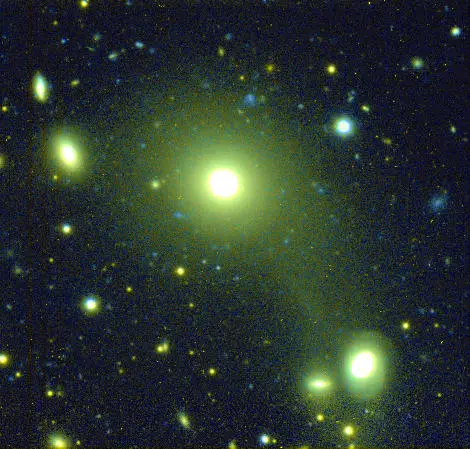Introduction: Comets have been a source of fascination for humans for a very long time due to their otherworldly allure and the enigmas surrounding their birthplaces in the cosmos. These heavenly travelers, which are made of ice, rock, and dust, will occasionally grace our night skies, and when they do, they will leave behind a wake of amazement and intrigue in their wake. The Green Comet of 2023 is one of the comets that has captured the interest of astronomers and stargazers all around the world. In this post, we look into the various aspects of this unique extraterrestrial guest as well as the significance of their presence.
The Investigation of the Green Comet: The Panoramic Survey Telescope and Rapid Response System (Pan-STARRS), which is located in Hawaii, made the initial discovery of the Green Comet on April 8, 2023. The comet has been given the scientific designation of C/2023 G2 (Pan-STARRS). Soon after, astronomers from all over the world pointed their telescopes in the direction of this fascinating object. They were anxious to investigate its qualities and uncover its mysteries.
Composition and Formation: Comets, such as the Green Comet 2023, are mostly made up of a mixture of ice, dust, and stony debris. This is also true of the Green Comet 2023. When they get closer to the Sun, the extreme heat causes the ice to melt, which then releases gas and dust particles into the atmosphere. A bright coma, also known as a hazy envelope, is produced surrounding the nucleus of the comet as a result of this process. Because the Green Comet’s atmosphere contains cyanogen gas and diatomic carbon, both of which emit green light when illuminated by the sun’s rays, it has a distinctive green hue. This coloration was caused by the presence of cyanogen gas.
Magnitude and Size: The precise size of a comet can be difficult to ascertain because its size frequently shifts over the course of time as a consequence of the sublimation of ice and the subsequent loss of mass. It has been calculated that the nucleus diameter of Green Comet 2023 is between 0.5 and 1 kilometer (0.3 to 0.6 miles), which places it in the category of being a comparatively small comet in comparison to certain notable comets from the past.
The Green Comet has shown extraordinary activity, creating a prominent coma and an extending tail despite the fact that it is only a little bit bigger than a pinhead. It is possible for the coma, which is a vast cloud of gas and dust that surrounds the nucleus, to extend for tens of thousands of kilometers. In addition, the comet’s tail, which is made up of ionized gas and dust, is capable of extending for millions of kilometers behind it as it travels through space.
The visibility and observations are as follows: Both professional and amateur astronomers have been treated to a mesmerizing show courtesy of the Green Comet 2023. Soon after its discovery, it became visible to the unaided eye in the southern hemisphere, gradually brightening as it approached the point in its orbit where it would be closest to the sun. As it continued its orbit around the sun, it became visible in the northern hemisphere as well, mesmerizing skywatchers with its brilliant green color and finely detailed tail.
The behavior of the Green Comet has been closely observed and investigated by scientists and researchers who have been looking into its make-up, structure, and path. The observations have yielded important new understandings on the ephemeral nature of comets and the development of our solar system.
Significance to Science The arrival of comets such as the Green Comet 2023 provides astronomers with a once-in-a-lifetime opportunity to learn more about the mysteries surrounding the beginnings of our universe. The material that makes up comets is thought to be a holdover from the early phases of the solar system and to provide important information about the conditions that existed during the process of the solar system’s formation. By investigating the make-up of comets, scientists are hoping to learn more about the components that make up life on Earth as well as the prospect of life existing elsewhere in the universe.
The vivid green color and mesmerizing exhibition of the Green Comet of 2023 have sparked our creative juices and captivated our attention. This wanderer in the cosmos, despite its very small size, has provided researchers and amateur astronomers with important new information about the mysteries that surround our solar system. As it proceeds on its voyage across the cosmos, we excitedly anticipate the enlightenment and awe that it may bestow upon us, as well as the revelations that it may bring.
![]()
